I suppose that my post this morning is my petulant way of responding to something I saw posted on Facebook last night that raised my hackles a bit. FB friend Donald Quintana posted an image of a Great Blue Heron as his way of reacting to the photo submission guidelines of a birding magazine that stated “Please, no more photos of Egrets or Great Blue Herons” (he didn’t say which magazine it was). It was his way of admonishing himself for not photographing common species as often as he felt he should.
I suspect the magazine said what they did because they get a high number of egret and heron images submitted and don’t appreciate having to go through them all – after all they’re relatively easy birds to photograph because they’re common, they’re large and they tend to be fairly approachable. But to me that doesn’t seem like a defensible reason to discriminate. They’re beautiful, majestic birds and if you eliminate them from the mix, what’s next? Some species will always be at the top of the list and if you consistently whittle off the most common submissions you’ll eventually be left with nothing but the Ivory-billed Woodpecker…
I can’t help but come to the defense of common species.
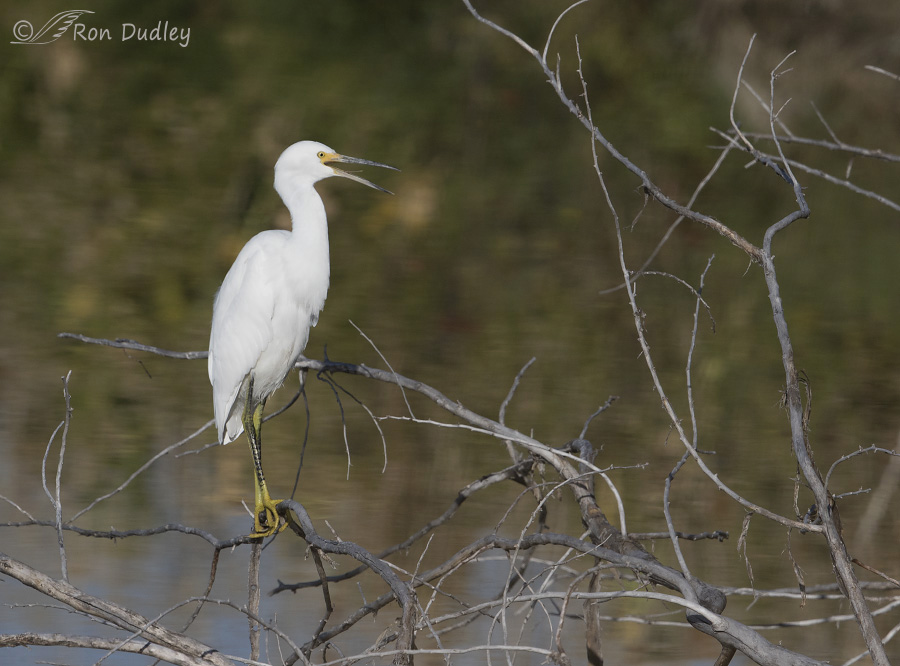 1/3200, f/7.1, ISO 320, Canon 7D, Canon EF500mm f/4L IS II USM, not baited, set up or called in
1/3200, f/7.1, ISO 320, Canon 7D, Canon EF500mm f/4L IS II USM, not baited, set up or called in
I found this Snowy Egret three days ago at Glover Pond near Farmington Bay. At first I wasn’t too excited about photographing it because the light was a little harsh (especially for a bright white bird), the setting was busy and I was shooting through a narrow tunnel of grasses between me and the egret. To be perfectly honest the main reason I kept my lens trained on the bird was because, based on its behavior, it was about to cast a pellet and I thought I might get lucky with some behavioral shots (I’ve since learned that Snowy Egrets are “not known” to cast pellets).
But when you’re photographing birds you never know what might happen and suddenly this egret…
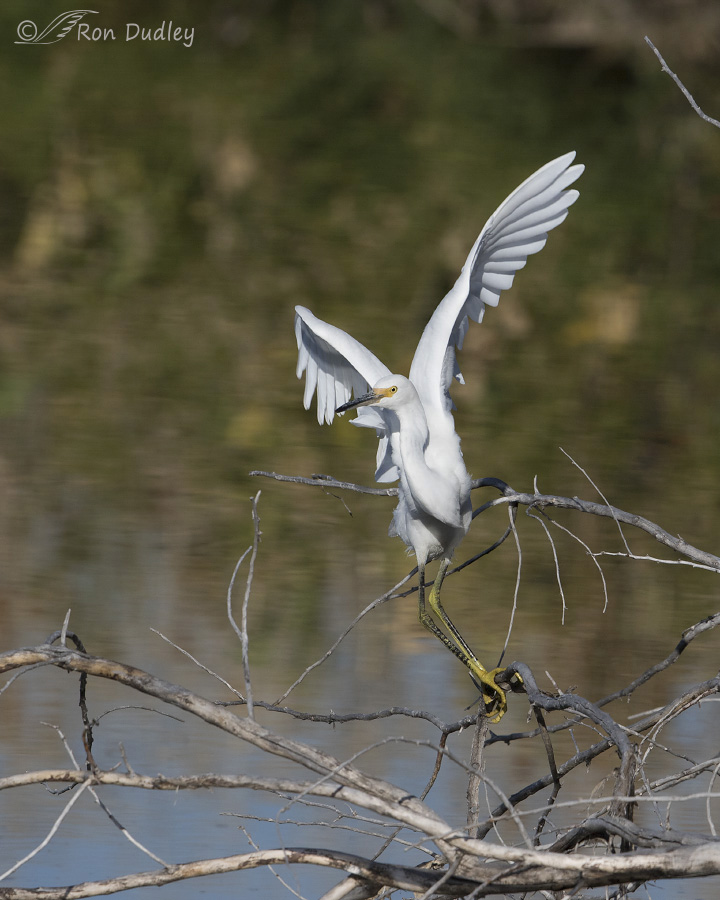 1/3200, f/7.1, ISO 320, Canon 7D, Canon EF500mm f/4L IS II USM, not baited, set up or called in
1/3200, f/7.1, ISO 320, Canon 7D, Canon EF500mm f/4L IS II USM, not baited, set up or called in
twisted and turned on its perch…
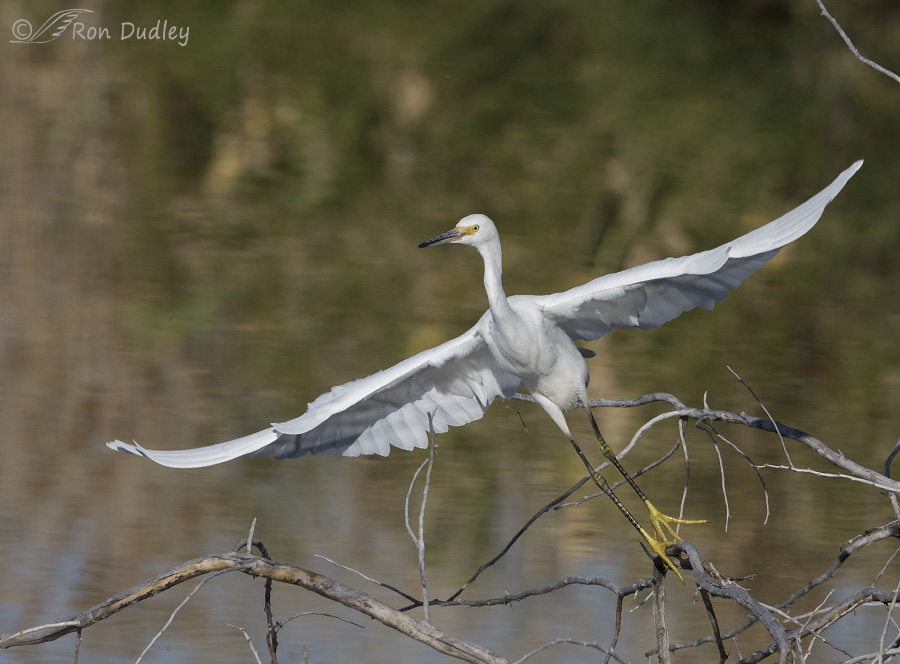 1/3200, f/7.1, ISO 320, Canon 7D, Canon EF500mm f/4L IS II USM, not baited, set up or called in
1/3200, f/7.1, ISO 320, Canon 7D, Canon EF500mm f/4L IS II USM, not baited, set up or called in
and took off to my left which I didn’t expect. This might be my favorite shot of the series…
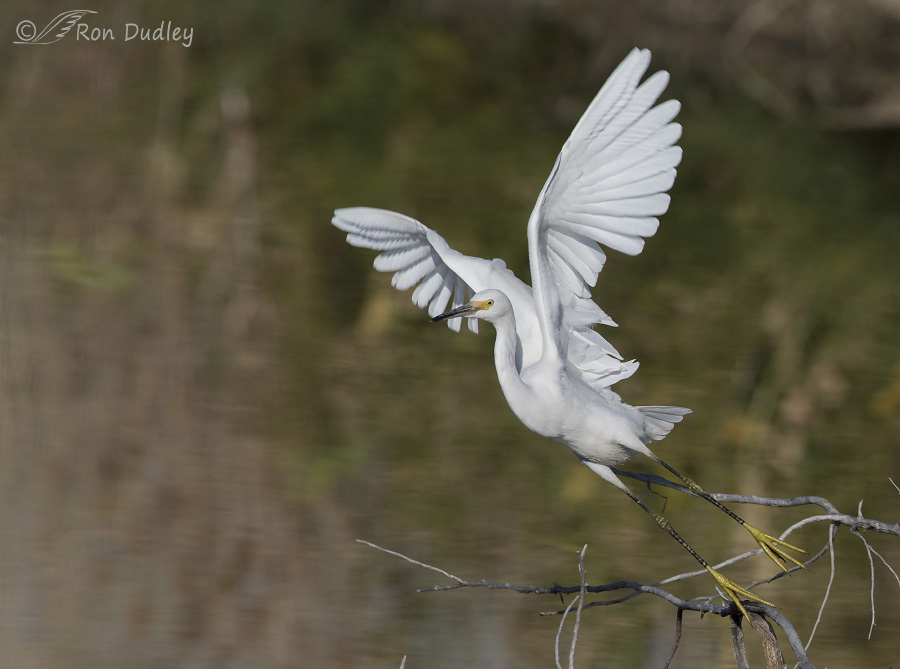 1/3200, f/7.1, ISO 320, Canon 7D, Canon EF500mm f/4L IS II USM, not baited, set up or called in
1/3200, f/7.1, ISO 320, Canon 7D, Canon EF500mm f/4L IS II USM, not baited, set up or called in
although I also like the wing position, the feather texture in the wings and the look at those “golden slippers” in this image.
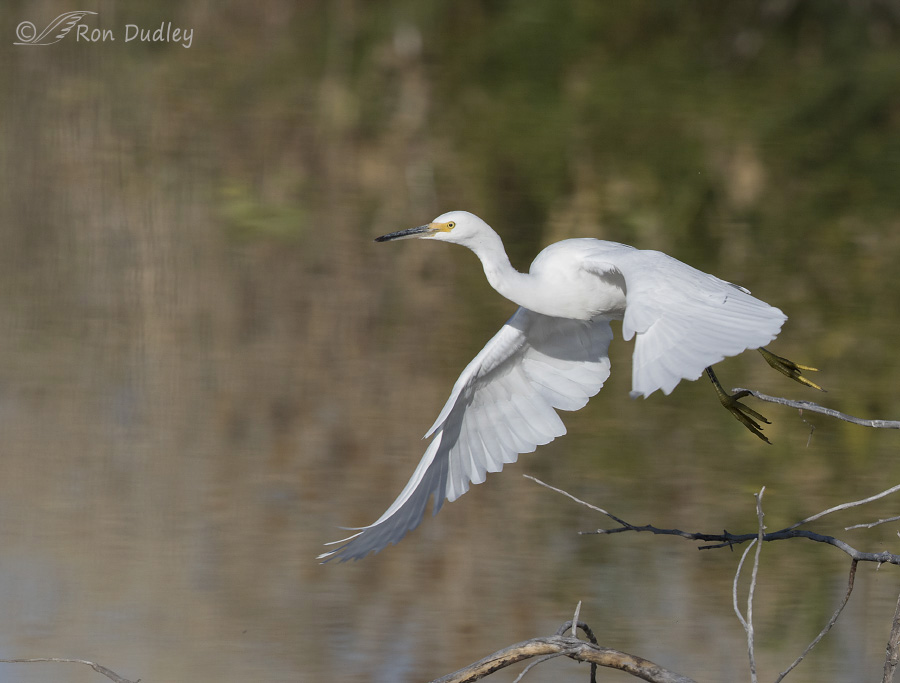 1/3200, f/7.1, ISO 320, Canon 7D, Canon EF500mm f/4L IS II USM, not baited, set up or called in
1/3200, f/7.1, ISO 320, Canon 7D, Canon EF500mm f/4L IS II USM, not baited, set up or called in
I was able to get one more shot of the egret in flight before it turned away from me and was gone.
Common species – gotta love’em.
Ron


They maybe common species, but your photographs of them are uncommonly beautiful. Thank you so much.
What lovely shots of this beautiful graceful bird Ron! Thanks for sharing!
Charlotte
Phooey on the mags, these are gorgeous! May be common, but it’s a beautiful bird!
Thanks, Judy. I haven’t heard “phooey” for a long time and it reminded me of how much I used to (and still do) like that word. Come to think of it I can’t think of a synonym that fits it very well…
A beautiful series of one of my favorite birds to paint…one i can always find a buyer for…” Common”? Let’s hope to heck they stay that way!!! I can never get enough of Great Blues or Snowys….
Thank you, Patty.
Common?
Not round here they aren’t.
And looking, really looking at the common so often brings up features or behaviours that aren’t common at all.
You’re right about that, EC.
Gorgeous. They are like ballerinas,
Thank you, Stephanie.
Funny. I don’t see Snowy Egrets as common, even though they probably are. I still remember the first Great Egret I saw (my first-ever Egret). One of the things that really impressed me was seeing it in flight on a bright, sunny day, which showed off the beauty of all those pure white feathers. Egrets are beautiful birds and fun to watch. The one you’ve photographed here reminds me of a ballet dancer. I’m fine with all the Egrets you choose to post. Or any other common birds, for that matter. There are always things we can learn and enjoy from the common birds.
Susan, As you know, common is relative and local. I seldom see Great Egrets around here so when I do it’s a real treat.
Great post Ron! Let’s hear it for those common species in all of their splendor and majestic beauty!
Thanks, Donald. You were my inspiration…
Loved the series, Ron as well as your comment on “Common Species”. I consider myself very lucky to live in Florida where I see Herons, Egrets, Ibises, Anhingas and Wood storks all the time – those same common species. In fact, my main photo on my FaceBook Timeline is a Great White Egret that I photographed at the Green Cay Wildlife Center!! I know we all have those elusive creatures we want to capture in photos but it would be so sad for me not to see ANY of the common species in our world. Back in the late 19th and early 20th century Plume hunting was all the rage – “By 1900, more than five million birds were being killed every year, including 95 percent of Florida’s shore birds” I’ll never get tired of seeing these beautiful creatures.
Plume hunting and market hunting in general were a disaster, Jo Ann. So many species suffered…
Great post, Ron! And right on the money. I’m trying desperately to obtain good images of our more “common” birds. Guess what I’ve discovered? It ain’t that easy!
….”the light was a little harsh (especially for a bright white bird), the setting was busy and I was shooting through a narrow tunnel of grasses between me and the egret.”
You succinctly described the problem when trying to get a photo of an egret. That magazine may get a lot of submissions of herons and egrets but how many QUALITY photographs do they receive??
Gotta go now and edit my Ivory-billed photos …..
Ha, I’ll bet I have TWICE as many images of Ivory-billed Woodpeckers as you do, Wally!
Thank you.
I couldn’t agree more strongly. “Common” species are all too often overlooked and as a result, not well observed or understood by many indivuals. Each year I give my students a very complete description of an American Robin leaving out only the color of the breast. Very few kmow what bird I am describing. It’s just a robin so they never bothered to notice the split eyering, the white spots in the tail or the white streaks in the throat. There is a similar response to Killdeer, starlings and other “common” birds. We miss so much detail and behavior by our bias. Most birders I know have a strong dislike for starlings, yet their biology and behavior is fascinating and there is much we can learn from them if we set aside our bias. And they are much loved in Europe.
Wonderful photos of a bird that is certainly NOT common where I live and one of my favorite birds to phptograph and enjoy when I do get the opportunity. Thanks.
Very well said, Dan.
I well remember a practical exam for my ornithology class at the U of Utah many years ago. Dr. Behle had many bird skins out on the tables that we had to identify. One of them was an American Coot with a genetic defect of its feet that caused those distinctive lobes on its feet to be highly unusual in their appearance. Even though all the other traits of the bird were those of the coot many of the students missed that question because the normal-looking lobes (much like the red breast of the robin) were left out of the equation.
I too agree with you Ron. They are beautiful birds. Love your series of shots. I also like the stretched out wings, but the legs/feet as well. Perfect!
Thanks very much, Jean.
I’m with you Ron! My gut clenches when I hear the word “common” applied to redtails and other birds. While they might be abundant or plentiful, they’re so, SO far from common. I’m liable to explode when I hear the next phrase, “Oh it’s JUST A redtail (insert other abundant species here)!! I will ALWAYS challenge that idea–ALWAYS!
Thank you so much for sharing your photography. It’s a special treat! THANK YOU!
Agreed, Laura. I know a highly skilled bird photographer who once said that he doesn’t photograph red-tails because they’re so common in his area. Different strokes I guess but I just do not understand it…
The mag. sounds like on of those “listers” if they have the bird on their list there is no need to see them again.
Yes, a similar mentality, Jo…
Uncommonly beautiful photographs of a lovely bird.
Thank you, Nancy.
Glorious images! Egrets are abundant in this area; ho hum? Not on your life. Always a welcome sight. Delighted starting today with your post. I’m bound to see plenty in the wild today.
Thanks Ron,
GD
“ho hum? Not on your life.”
Exactly, Gary. IMO, “common” certainly doesn’t make them less desirable. Thank you.